Brief History of Penza
Penza in the 17th-19th centuries
Penza was founded as a fortress on the southeastern outskirts of the Tsardom of Russia to defend the country from nomadic raids in 1663. In 1665, the population of the town was about 3,300 people. Penza was attacked by nomads in 1668, 1680, and 1717, but they were never able to capture the fortress.
In the first third of the 18th century, Penza became an inner town of the Russian Empire and lost its former strategic defensive significance. In 1781, the coat of arms of Penza was approved - three sheaves (wheat, barley, and millet) in a green field symbolizing the fertility of this land. In 1786, the Penza Public School was founded - one of the oldest educational institutions in Russia. In 1796, the town became the center of the Penza Governorate.
In 1811, the population of Penza was about 14,800 people. In 1848, one of the oldest hippodromes in Russia was founded here. In 1858, a fire broke out that destroyed half of the town. In 1873, the first circus in the Russian Empire was opened in Penza.
Penza was traditionally located at the intersection of important trade routes. By the end of the 19th century, the town was included in the country’s railway network. In the 19th and early 20th centuries, the leading role in the Penza economy was still played by the trade in bread and alcohol. According to the All-Russian census of 1897, 59,981 people lived in Penza.
More Historical Facts…
Penza in the 20th centuries
As a result of the intensive development of the city at the beginning of the 20th century, its population increased to 105,000 people by 1917. On February 4, 1939, Penza became the regional center of the newly formed Penza Oblast. By that time the population of the city was about 160 thousand people.
During the Second World War, a lot of enterprises from the west of the USSR were evacuated to Penza, which was the beginning of the industrial growth of the city. Penza became one of the country’s most powerful centers for the production of mortar weapons. In 1943, an industrial institute was opened (today’s Penza State University). Over the years of the war, over 300 thousand people were drafted from Penza Oblast to the Red Army, of which over 190 thousand died.
After the war, new industries appeared in the city, which led to the creation of design bureaus and an extensive network of research and experimental institutes. Mainly, mechanical engineering, instrument making, light, and food industries developed.
In 1962, the general plan for the construction of Penza was approved, the implementation of which made it possible to build new micro-districts in the city and reconstruct the existing ones. In 1981, the Penza Zoo was opened.
In 1986, the Penza region suffered from radioactive fallout after the accident at the Chernobyl nuclear power plant. About 4,130 square kilometers (9.6%) of the territory of the region, 200 settlements with a population of 131 thousand people were exposed to radioactive contamination.
In 1991, the population of Penza reached its maximum - about 552,000 people.
Pictures of Penza
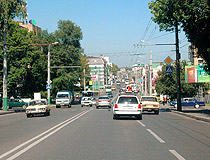
On the street in Penza
Author: Vitaly Shchukin
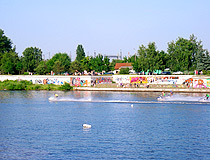
Water activities in Penza
Author: Michael Ploschke
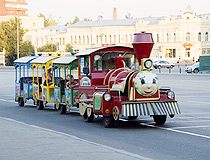
Little train for children in Penza
Author: Vitaly Shchukin
Penza - Features
The city was named after the Penza River, on the steep bank of which a fortress was built in 1663. The origin of the word “penza” is not fully understood. Some local historians are inclined to believe that it has Indo-Iranian roots and means “dust, sand”. There is also a hypothesis relating this word to the Mordovian dialect, translated from which it means “swamp”, “end of the road”. According to the Karelian language, this word means “bush”. And among the peoples of the Komi and Nenets, this is the name of a drying stream.
The climate of Penza is moderately continental. Winters in Penza are moderately cold and long, lasting from early November to late March. The coldest month is February with an average temperature of minus 9.1 degrees Celsius. Summers are warm, lasting from late May to early September, with an average July temperature of plus 20.4 degrees Celsius.
The federal highway M5 “Ural” (Moscow - Chelyabinsk) runs within the city of Penza. Also, the road R209 Penza-Tambov begins in the city, the federal highway R158 Saratov-Nizhny Novgorod runs a few kilometers from Penza.
On the southern outskirts of Penza (Ternovka district), there is the Penza Airport named after V.G.Belinsky. It operates regular flights to Moscow, and in the summer to Sochi. Urban public transport is represented by trolleybuses, buses, and minibuses. Penza is one of the few large cities in Russia that does not have trams.
Penza is a city that combines tranquility, the slowness of the province and an impressive number of interesting cultural sites. It is pleasant to walk along the old streets here, looking at the sights of Penza. This is one of the greenest cities in Russia. From almost any microdistrict of the city, you can walk to the forest in 20-30 minutes. The best time to visit Penza is summer, when the streets are lined with greenery, or in winter during the New Year holidays.
From Penza you can bring Nikolsky crystal and Abashevskaya toys. A very large selection of souvenirs can be found at the railway station square: The Exhibition and Trade Pavilion “Penza Souvenirs”.
Main Attractions of Penza
Penza Zoo. Founded in 1981, it covers an area of about 10 hectares in the central part of Penza. This is a unique complex with varied landscapes, century-old trees, and natural lakes. Today, more than 200 animal species live in it. Different parts of the zoo are connected by alleys and paths. Krasnaya Street, 10.
Moskovskaya Street - the main street of Penza located in the historic center of the city. On this street, there are the Penza Drama Theater, hotels, banks, and shopping centers. A lot of souvenirs, paintings created by local artists are sold here.
Museum of One Painting named after G.V. Myasnikov - one of the most famous and visited sights of Penza. This is a unique museum of this kind in Russia and the world. It does not have a permanent exhibition. Visitors (the hall has 37 seats) are presented with one single painting, a detailed story about which is preceded by a movie about the artist’s life and work. The museum is located in a building that is an architectural monument of the second half of the 19th century. Kirova Street, 11.
Monument to the First Settler - one of the most recognizable symbols of Penza. The monument dedicated to the founders of Penza was installed in 1980. It is a sculptural group on a pedestal, consisting of figures of a horse and a man standing next to it with a spear and a plow in his hands, symbolizing a warrior and a farmer (the first settlers had to have a variety of skills in order to survive). There is an observation deck around the monument, from where you can enjoy the panorama of Penza. Kirova Street, 11.
Penza Museum of Local Lore. On an area of more than 1 thousand square meters, you can see archaeological, ethnographic, art, and numismatic collections. Also there are thematic exhibitions: “The Diversity of Life on Earth”, “Unfading Glory to the Feat”, “The Old City with a Russian Soul”. Krasnaya Street, 73.
Penza Regional Picture Gallery named after K.A. Savitsky - the largest and one of the most famous museums in the Penza region. Opened in 1892, it is housed in a building designed by the architect von Gauguin for the Land Bank. The first exhibition was based on the personal collection of paintings of Nikolai Dmitrievich Seliverstov, the Governor of the Penza Governorate. Today, the exposition numbers about 12 thousand paintings: Western European painting (Italy, Holland, France), Russian art, local artists. Sovetskaya Street, 3.
Penza Museum of Folk Art - a museum dedicated to the preservation, study, and promotion of traditional Penza crafts and works of folk craftsmen. Here you can see a unique collection of exhibits: ceramic dishes, art glass, paintings, weaving, embroidery, down-knitting. Kuybysheva Street, 45.
Center of Theatrical Arts “The House of Meyerhold” - a theater-museum opened in the house where the famous director and actor V.E. Meyerhold lived. The exposition is dedicated to his life and work, it consists of more than 10 thousand items. The theater is an experimental platform where performances are staged using the creative heritage of Meyerhold. It is located in a picturesque wooden building constructed in 1881. Volodarskogo Street, 59.
Trinity Convent - a very beautiful architectural ensemble located in the very center of Penza. Kirova Street, 25.
Assumption Cathedral (1905) - a picturesque red brick church built in the neo-Russian style with elements of old Russian architecture. The interior is decorated with wall paintings and a carved gilded iconostasis created in the middle of the 20th century. Zakharova Street, 6.
Central Park of Culture and Rest named after V.G. Belinsky. Founded in 1821, it is one of the oldest parks in Russia. This place was visited by Russian emperors (Alexander I, Alexander II, Nicholas I), famous scientists, writers, and statesmen. During the Soviet era, the park continued to develop and expand. Today, it is a modernly equipped area for walking and entertainment. Karla Marksa Street, 1.
Sculpture Park “Legend” - the largest collection of sculptures in Russia and one of the largest in the world located about 18 km from Penza. In total, there are more than 300 sculptural figures and compositions created by sculptors from dozens of countries from various materials: granite, marble, limestone, bronze, plastic, wood. In addition to sculptures, the gallery of contemporary art “Art-Penza” is open here. Penza Oblast, Mokshansky district, Ramzai village, Ozdorovitelnaya Street, 9.
Museum-Reserve “Tarkhany” - the former estate of the Lermontov family located in the village of Lermontovo, about 100 km from Penza. Mikhail Yuryevich Lermontov, one of the most important Russian poets, spent his childhood here. In 1942, his body was brought here from Pyatigorsk for reburial at the family cemetery. The museum-reserve on the territory of the estate was organized in the 1960s.


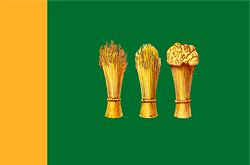
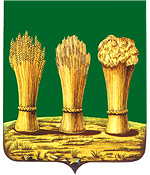
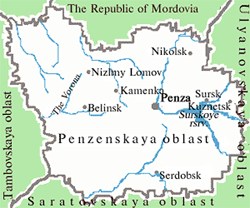



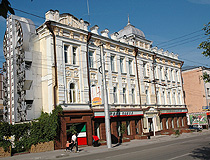
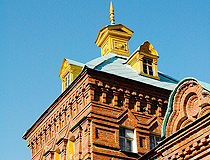
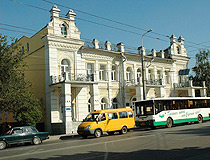
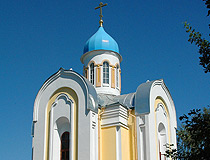
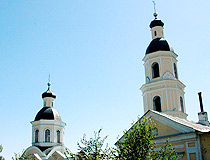
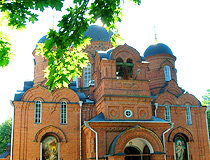
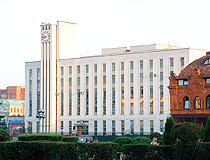
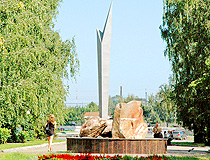
The comments of our visitors